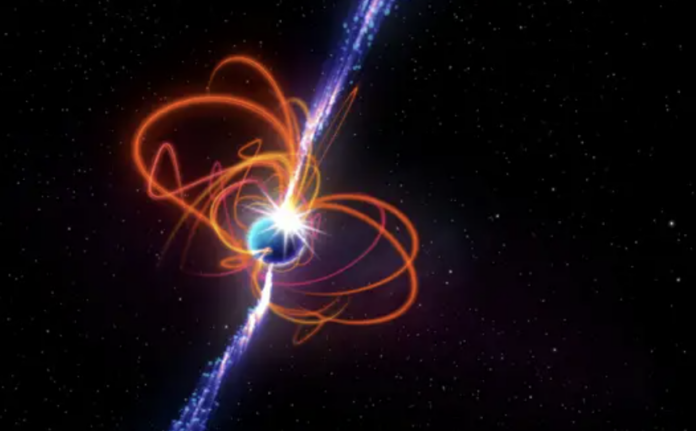Meet “Teleios”, a near-perfect cosmic sphere that’s got astronomers scratching their heads and everyone else saying, “Wait… is that even real?” Discovered using Australia’s powerhouse radio telescope array ASKAP, this mystery object is massive, mesmerizing, and possibly rewriting the rules of how we understand the aftermath of stellar explosions.
Let’s start with the basics: Teleios is round. “Incredibly” round. We’re talking cue ball-smooth on a galactic scale. It spans up to 157 light-years across and is located somewhere between 7,100 and 25,100 light-years from Earth — a modest stone’s throw in cosmic terms. And yet, this floating snow globe in space is so symmetrical, scientists dubbed it “Teleios” — the Greek word for “perfect.”
Now here’s the kicker: You can’t see it with your eyes. Not even if you were floating next to it in a starship. Teleios is completely invisible in visible light, X-rays, and infrared. It only shows up in radio waves — the long, slow pulses of the electromagnetic spectrum. It’s a literal ghost of space, detectable only by our most advanced tech.
So what is it? Researchers have a couple of educated guesses. The leading theory? Teleios is a “supernova remnant” — the leftovers of a star that went kaboom. But even that explanation has holes.
Most supernova remnants are jagged, chaotic, and scarred by their environments. Teleios? It’s stayed symmetrical over what could be tens of thousands of years. That’s like dropping a water balloon in a war zone and it somehow staying perfectly round.
Another theory? It might be a “stellar wind bubble” — a cosmic cavity formed by powerful stellar winds blowing gas out from a giant star. Still, no one’s staking their PhD on that just yet.
What everyone “can” agree on is that Teleios is weird — hauntingly so. It’s quiet, faint, and oddly untouched by the violent messiness of space. And that makes it rare. Very rare.
This discovery is just one of the reasons scientists are excited about the EMU project — the Evolutionary Map of the Universe — a survey that’s turning the southern sky into the most detailed radio map we’ve ever seen. And Teleios? It’s one heck of a find along the way.
So what does this mean for us down here on Earth? Well, maybe nothing right now. But in the long run, understanding how objects like Teleios form could give us powerful insights into the life cycle of stars, the shape of our galaxy, and even the physics of space-time itself.
One thing’s for sure: we’re not just looking deeper into space. We’re seeing stranger — and possibly more beautiful — than ever before. Stay tuned, because if this is what we’re picking up now, the next discoveries might be even more jaw-dropping.




